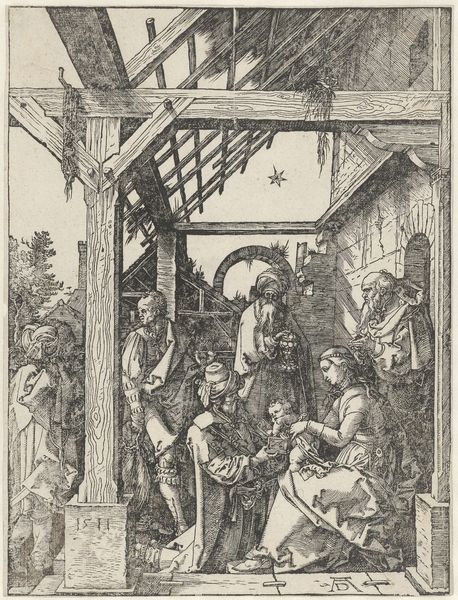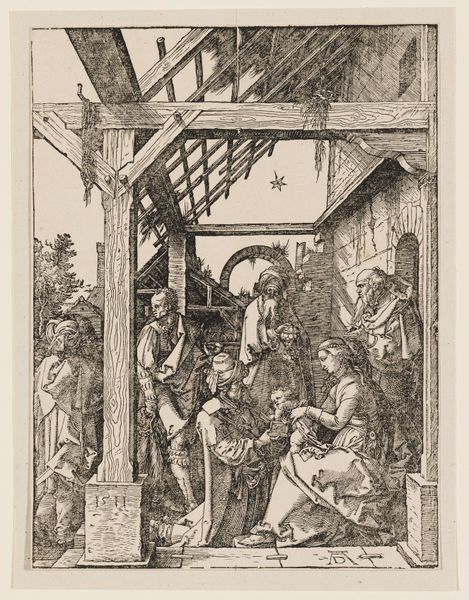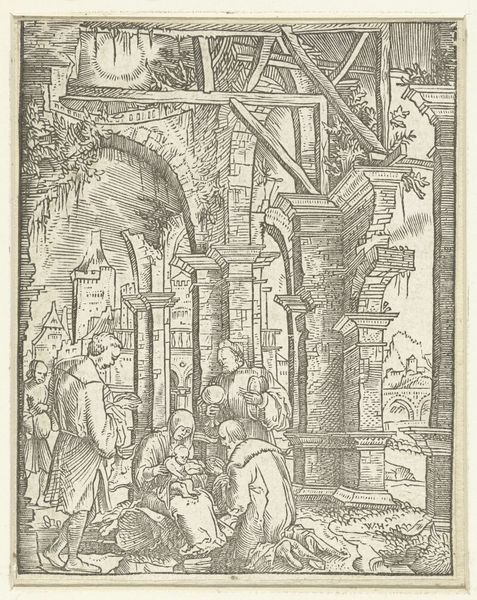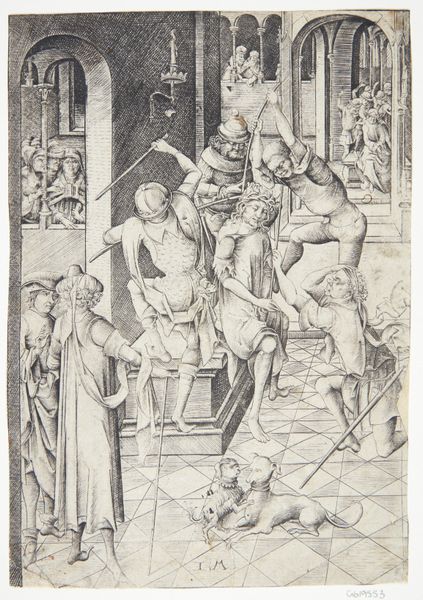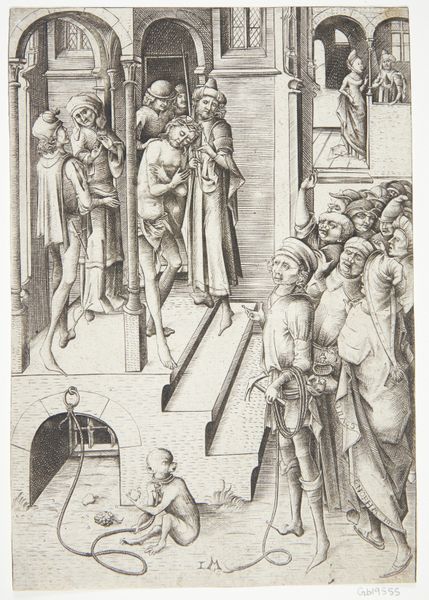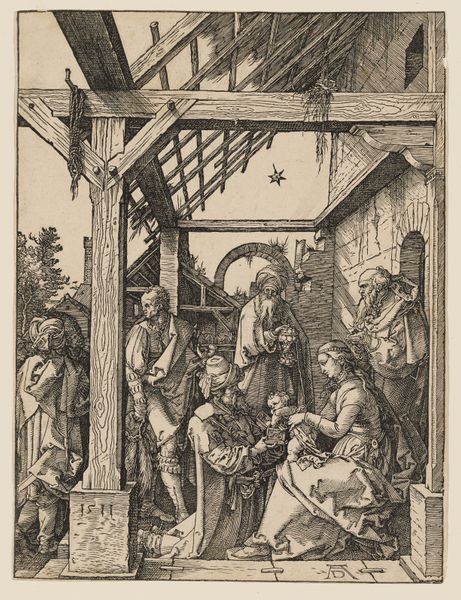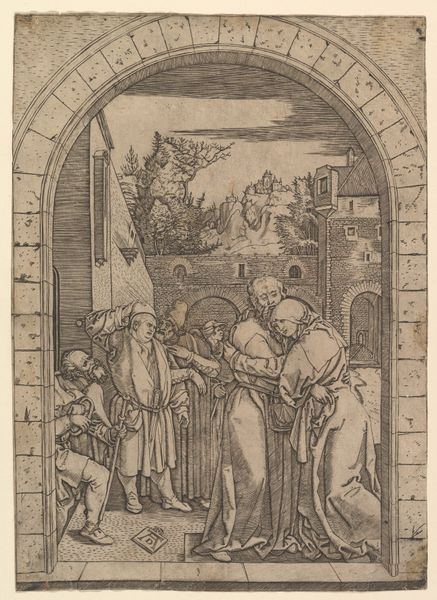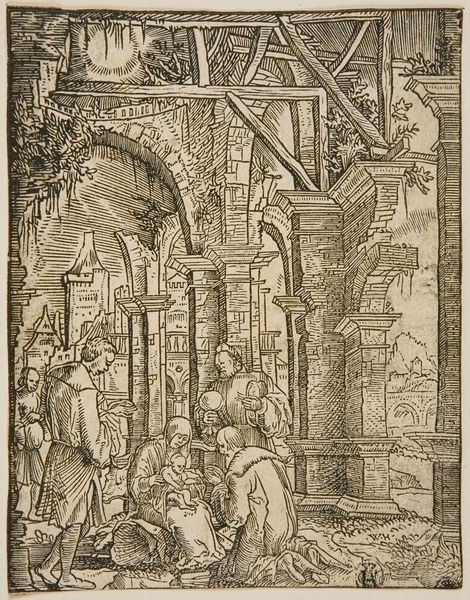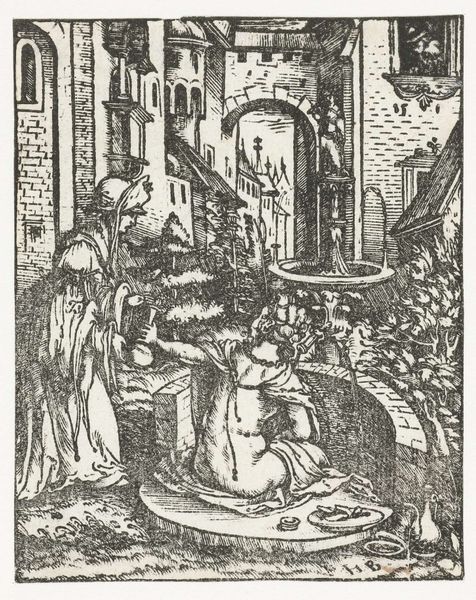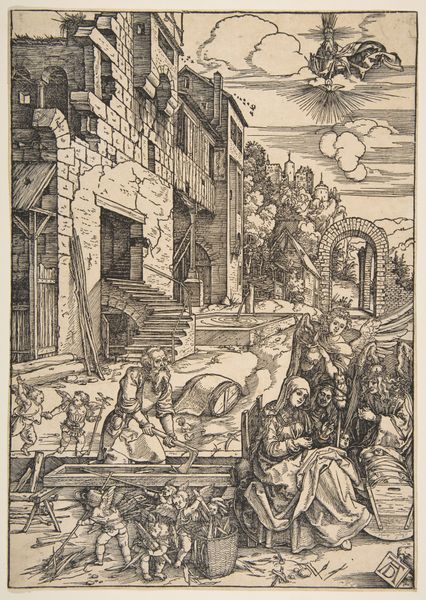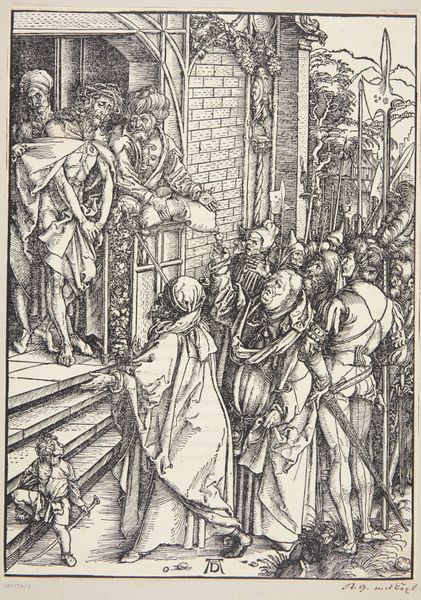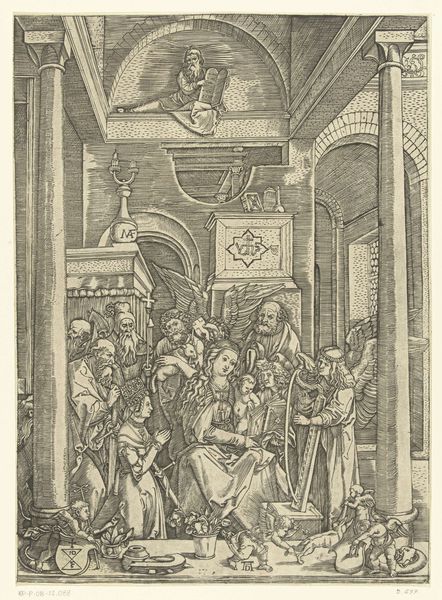
drawing, print, ink, engraving
#
drawing
#
narrative-art
#
pen drawing
# print
#
pen sketch
#
figuration
#
ink line art
#
ink
#
line
#
history-painting
#
italian-renaissance
#
engraving
Dimensions: height 294 mm, width 210 mm
Copyright: Rijks Museum: Open Domain
Editor: Here we have "Adoration of the Magi," a pen and ink drawing by Marcantonio Raimondi, created sometime between 1510 and 1515. It has such intricate linework, but the setting feels almost… staged, you know? Like it's meant to convey more than just a holy scene. What stands out to you? Curator: That sense of theatricality is precisely the point. Raimondi, deeply embedded in the Italian Renaissance, created this piece not just as a religious illustration, but as a comment on the socio-political structures of his time. Consider how the "stage" - as you called it - elevates the holy figures. Editor: Elevates? Curator: Precisely. See the dilapidated building juxtaposed with the celestial angels above? The divine seems to exist almost in spite of the earthly structures, creating a visual tension. Raimondi critiques the Church's reliance on grand architecture and opulent displays, which are represented as broken. This suggests a deeper reflection on faith. Why do you think he chose engraving? Editor: Maybe for wider distribution? Prints allowed these ideas to reach more people than a painting hanging in a church could. It became accessible to all! Curator: Exactly! The choice of printmaking was, in itself, a political act, democratizing religious imagery and encouraging wider interpretation. These choices served as important components to disseminate ideologies within society. Editor: That's fascinating! So, it wasn't just about depicting a scene, but sparking a conversation. Now I'm wondering about his other pieces and the contexts behind those. Curator: Indeed. Art constantly interacts with its public, reflecting, reinforcing, and sometimes rebelling against the prevailing norms. Hopefully, you’ll think about that throughout your degree.
Comments
No comments
Be the first to comment and join the conversation on the ultimate creative platform.
